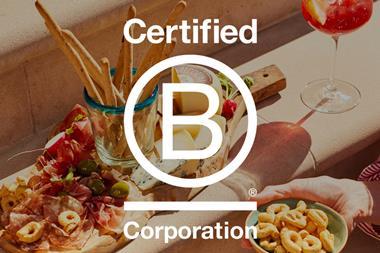
Aldi and Lidl have been players in UK food retailing for over 25 years but the food discount concept they espouse remains little understood by competitors and pundits. This has led to the current situation, in which both discounters expand seemingly inexorably and the competition sits back and simply watches.Time, therefore, to clarify some basic misconceptions about discounters.
The most important misconception is that discounters are first and foremost about price. Obviously they are cheaper than the likes of Tesco on many lines but this is because Tesco lets them. In Germany, both Aldi and Lidl accept that all other retailers match their prices. Instead of being cheaper, they try - and mostly succeed - to have better quality. The price issue leads to another misconception, namely that Aldi and Lidl focus on fast movers. Of course, they do both have key fast movers but these constitute only about 10% of their assortment, the remainder being lines that turn into fast movers by being offered by the discounters.
In fact, discount customers have an attitude that is completely different from supermarket customers. The latter buy what they have been looking for; the former what they have been offered. A discount customer fully accepts the small assortment and settles for whatever is offered, provided these products it covers his basic needs. This attitude allows Aldi and Lidl to carry lines that are different from each other and their competitors, and much less exposed to the nefarious price competition that destroys profitability even for discounters.
Another fundamental misconception about discounters is that they are about reducing costs wherever possible. Obviously, both Aldi and Lidl have very low overall costs, but they don’t reduce costs blindly; they go about it in a very selective way. In fact, they splurge money in certain fields. The most obvious is space. No one needs 10,000 sq ft for 1,000 lines, but Aldi and Lidl do exactly that. There are two reasons: customer comfort and - more importantly - personnel costs. Staff work much more efficiently in a large store than in a small one, and the ensuing cost advantage compensates for having to pay more for larger space … at least in most countries. It is this aspect of the discount model that betrays most its German origin: space is cheap in Germany and staff are expensive, so it makes sense to have a business model that replaces staff with space.
Incidentally, the German discount model is not actually particularly suited to the British market given the high cost of space. Both Aldi and Lidl still have cost advantages in the UK, but mainly due to the inefficiency of their competitors rather than to the superiority of the discount model as such.
There are further aspects that highlight the selective nature of cost cutting at the discounters. Staff efficiency at Aldi and Lidl has halved over the last 20 years, mainly because both discounters have improved store standards and working conditions.
Aldi and Lidl could improve their personnel costs significantly if they let empty carton boxes lay on the shelves for some time as they did 20 years ago. Or take the floor tiles used by Aldi South - a particularly heavy duty tile produced especially for Aldi and more expensive than marble. The advantage is a nice floor without broken tiles even after decades of use and no interruptions to trading due to repairs.
The key message is this: there is much more to the business models of Aldi and Lidl than meets the eye. Indeed, the performance gap on any KPI between a top discounter and a bad discounter is way bigger than that between a good superstore and a bad one, which is why no newcomer to the discount business has ever surpassed Aldi and Lidl.
Thomas Roeb is a professor at Bonn-Rhein-Sieg University and a former Aldi manager



















No comments yet